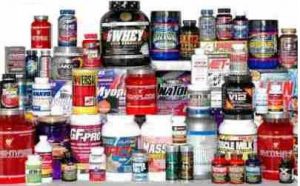
United Nations Food and Agriculture Organisation had marked June 1 as World Milk Day in 2001, in order to encourage more people to include milk and milk products in their daily diet. Read about the two types of milk available, and why our desi milk is better at increasing immunity and fighting diseases.
Milk is the primary source of nutrition for a newborn baby, till the age s/he is able to eat and digest other foods. Milk and its by-products are considered to be an essential and healthy part of our daily routine containing essential nutrients like calcium, phosphorus, magnesium and potassium for overall human growth.
India is fortunate to have Desi breeds of cows whose milk is A2 type (there are two types of milk- A1 and A2- depending upon the location of cows). However, lured by the high- yielding profitable milk, many dairy houses are opting for American breed cows.
The scientists classify cows in countries that are near to equator as of A2 variety, while colder nations have A1 milk supplying breeds. The A2 variety is healthier for humans, compared to the A1 type, which is light and more absorbable.
“The problem of malnutrition is increasing in metropolitan cities of India due to the ready availability of A1 milk which disturbs gut bacteria inside our bodies, ultimately leading to malnutrition. Study says that ten out of 100 people suffer from malnutrition in metro cities while this problem is not so grave in A2 milk predominant areas. The pure Indian breeds are A2 milk gene dominants,” The technical director and research head of SIDCUL- based company Tripura Biotech Pvt Ltd, Hemanth Kumar Manikyam says,
In Uttarakhand, especially in the uphill locations where Desi breed of cows are predominant and are the primary source of milk, scientists have found less lactose intolerance cases in the children than A1 milk consuming families, whereas lactose intolerance is the major issue in many metropolitans where A 1 milk is predominant, added Hemanth. Type 1 Diabetes is also less prevalent in A2 milk consuming parts of India rather than A1 milk consumption areas.
Desi breed cow’s milk is similar to mother’s milk or goats’ milk, and much appreciated worldwide. Having known this, our sages treated Indian cow as a part of one’s family, said Swami Niranjanananda. Since ancient times, products made from Desi cows’ milk directly or indirectly are called Godhan (wealth of cow). Milk, ghee, curd, distillate of urine and cow dung are called as Panch Gavya in Ayurveda. All these five products are known to increase person’s immunity to fight diseases.
Lot of work is being done in Patanjali Bio Research Institute which is working on genetic breeding and aiming at production of A2 breed cows. To safeguard the A2 milk breeds, the Indian Desi breed cows can be cross- bred with others to produce high milk yielding varieties of cows, but it is necessary to save the original stock.
“Very soon Patanjali Yog Peeth would be promoting the conservation of Desi cows on a large scale and also increasing their progeny,” said Acharya Balkrishna.
Full article on Dailypioneer. Read more here.









Leave a Reply